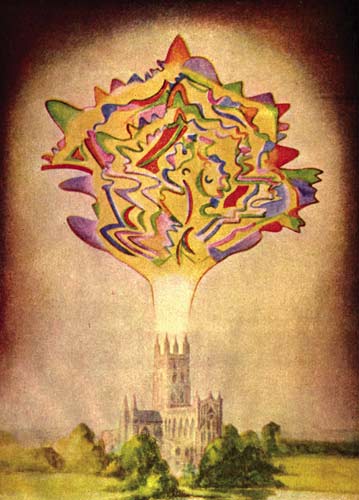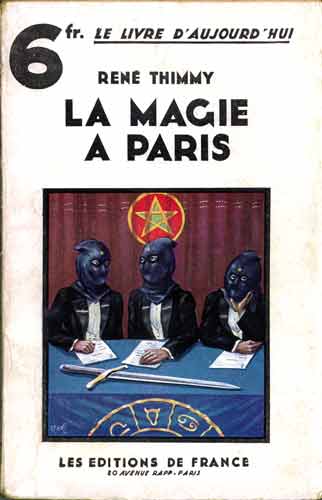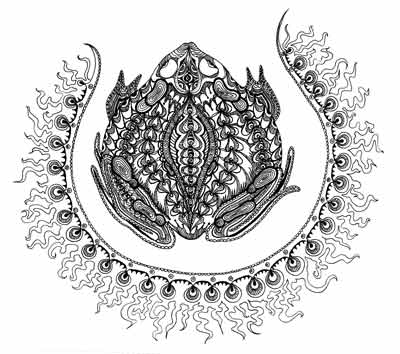Strange Attractor Journal, celebrating unpopular culture

Strange Attractor Journal is strange and attractive. Like a personal ad for disenfranchised monuments, exotics, mammals and amphibians, alchemies and thoughts: Available - unexpected daze and bliss, cured with salt and a hypothesis.
Begun in London in 2001 by John Lundberg, documentary filmmaker, and Mark Pilkington, Editor Maximus, on the embers of eclectic events featuring and collecting lecturers, films, and occultists, SAJ has created a tangible curio box of printed matter that extends beyond itself into the known universe. SAJ celebrates the strangeness and magnificence of human beings roaming around on the earth, dreaming about the sky, conceiving machines and contraptions, putting their natural resources to good use - exploration, definition, redefinition, and not knowing anything about anything so deeply that knowledge is imagined into being.
~~~~~~~~~~

Following is the nonlive transcript of questions posed to Pilkington February 13 & answered February 14.
AG: What did the first issue look like, preproduction and totally raw? What were your first ideas for the magazine?
MOP: When John Lundberg and I first started doing the Strange Attractor events at London's Horse Hospital, I was already thinking about collating the talks and presentations into a more permanent form, either on our web site or in a publication. The live events were wonderful and I still meet people who talk about enjoying them six years later, but memories (and perhaps a few minor injuries!) are all that's left of them.
The Journal was intended to crystallise the nascent SA aesthetic and ideosphere into a tangible and pleasing form. I'd always loved journals from the late 19th century and had previously found a stash of 'The Idler's, edited first by Jerome K. Jerome and then by one of my favourite illustrators, Sidney Sime, amongst a pile of junk on Kingsland Rd in East London. I wanted the Journal to pick up the spirit of those publications, which would feature an article about Queen Victoria's menagerie alongside fiction and early ethnographic writing, and a bit of their visual flavour, without aping them entirely, of course. In my formative years, I was also influenced by numerous occult and esoteric books, and counter culture anthologies like Rapid Eye, Apocalypse Culture, Re/Search, that kind of thing.
Designer Ali Hutchinson and I went through a couple of permutations, but actually arrived at the style of SAJ1 fairly early on. It hasn't really changed much since, though I'd like to think we've refined it by SAJ3. We've been very lucky in that we had no experience of book publishing when we started - although I'd worked on the editorial side of a couple of magazines - it really was a very DIY endeavour. Now we're doing it semi-profesisonally for commissioned work, which is great and will pay for future Strange Attractor Press publications.
AG: What kind of music do you listen to? What music are you listening to right now?
MOP: Right now (10.56am), I'm listening to Mitternacht by Kraftwerk, from AutoBahn. I listen to music most of the time when I'm working, though I tend to prefer atmospheric / instrumental music and always have. My first music purchases as a young teen in the later 1980s were horror and SF film soundtracks. Then I got into Pink Floyd, Tangerine Dream, Coil/Current 93/ Nurse With Wound, Throbbing Gristle, Can, Kraftwerk and started expanding out from there. That was about 17 years go, though, so I've been all over the place since, as you might expect from a sonically curious sort of person.
I've always been a big krautrock/kosmische fan and still DJ for the Kosmishce club and radio show (myspace.com/kosmischemusik and www.resonancefm.com) - I recently got to meet and write about two of my musical heores, Dieter Moebius and Hans Joachim Roedelius of Cluster/Kluster/Harmonia for Plan B magazine here in the UK. I'll put it online sometime soon.
Other things I listen to a lot these days - Brian Eno's Discreet Music, Terry Riley, (early) Klaus Schulze, Popul Vuh, Heldon, Philip Bescombes, Franco Battiato, Alice Coltrane, Gaupo, Robbie Basho, High Tide, Mount Vernon Arts Lab, Giorgio Moroder, Erik Satie, Fela Kuti, C.O.B., Cyclobe,Trees, Circle, the Harry Smith athologies, Joe Meek, Tristram Carey, a lot of Ghost Box stuff, William Basinski, lots of 60s psych, various early electronic composers and exoticists. For some reason about 75% of what I listen to was made between about 1967 and 1975, but I love all kinds of music and go to quite a few live shows in London, though more often than not, it's to see friends who are playing small gigs.
[As a hobby I also play in some underground kosmische-style bands like Raagnagrok, Stella Maris Drone Orchestra and The Stargazer's Assistant. I fiddle with synthesisers though I have no musical training, just my ears. My girlfriend Alyssa recently taught me to play some scales though, which helped. So music is a big part of my life.]
AG: What are you reading now?
MOP: I don't get to read a lot of fiction anymore as most of my reading is work-related, though I did recently read Tim Power's time travel romp The Anubis Gates (from 1982 I think), which is a lot of fun. Built by Animals, about animal architecture, has been sitting on my desk for months crying for my attention too, but I'm doing a lot of research for a book I'm preparing to write about disinformation, intelligence and the creation of the UFO mythology and its attendant culture. So a lot of my current reading is on those subjects. The book, called Mirage Men, is an expansion of a documentary film that John Lundberg and I have been working on for some years now. I've had a waxing and waning fascination for the UFO subject most of my life and am finally getting to write something about it. John and I have thrown ourselves somewhat head first into the lion's den with it to the extent that I've been accused of being a British Intelligence Agent, which made me laugh.
I'm currently wading through a huge 600-page book called Body of Secrets by James Bamford. It's about the National Security Agency, previously so secretive that until the mid 1970s most US congressmen didn't even know it existed. It's responsible for international communications monitoring and intelligence, which may not sound very exciting, but the book is packed with incredible data - for example, did you know that long-range communications signals were being bounced off the Moon in the early 1960s? They're effectively capable of eavesdropping on any form of electronic information exchange - which is pretty much everything these days. I'm also about to tuck into Carl Jung's highly prescient book on flying saucers, written in the 1950s. There's a few disinformation and intelligence- related books cued up to be read, as well as plenty more UFO books and hopefully a few necessary diversions.
I'm also always going through manuscripts for future Strange Attractor books, so there's a lot of information passing through my mind at any one time, probably why I don't listen to much vocal music...
AG: What would it be like to build a time machine?
MOP: Ask me again in two thousand years. I have a pretty good itinerary worked out for when I get mine working though.
AG: What is the fourth dimension?
MOP: According to the scientists, it's time, but I suspect that it - or at least Dimension Five or Six - is actually mind.
AG: How should one read SAJ? What music should one listen to while reading?
Some of the material is a little rich to be read in any long sitting, so I'd like to think that it's something you dip in and out of over time. While they are intended to be readers' books, they are meant to be enjoyed as artifacts as much as assemblages of words and images, so I hope they will sit on peoples' shelves for many years to come and be pulled down for a taste every once in a while. Really I expect that people read them like they do other books, in bed, on the loo, while travelling. Not as many people sit in a chair and read with intent these days, there are too many other distractions, but I hope SAJ and our other books will inspire people to do so.
You can listen to what you like while reading them, though the thought of a companion CD has crossed my mind a number of times. We'll hopefully be putting out a short run CD of music with Ken Hollings' book Welcome to Mars, which I'm putting out in May. Last year I also put out a very short (33) run CD of squirming, shimmering music by Drew Mulholland/Mount Vernon Arts Lab which would make a great accompaniment to SAJ reading, and am preparing a release by mysterious entities known only as Spectral and The Asterism.
I'm also hoping to publish a couple of music books in the future, though until I get that time machine working it could be a long while yet!
~~~~~~~~

Courtesy of Katie Owens
Science Fraction: Where Nonsense Meets Reality
The most wondrous of dreams are those with a feathered foothold in reality. Or what we become fond of calling reality. In reality, reality is a rare thing and makes its appearance like an endangered species, among peculiar fauna and strange weather. In an article entitled, "Adventures in the Fourth Dimension," writer Mike Jay brings together a cast of characters that includes H.G. Wells, Robert W. Paul, technician and illusionist, and time itself to weave a tale of the Time Machine that never was. But in that never being, and the plans and patents for such a machine, circuses were planned with projectionists, magic lanterns, and illusions such as the world had never seen.
Whenever there is some great invention or discovery, we are moved to think even beyond that great accomplishment to a wider range of experience. We always dream the future. In expanding the view of the world as a four-pointed place, of three physical dimensions, to a fourth dimension, scientists and laypeople alike have been moved to peek behind the veil. The ensuing story of Wells, Paul and the Time Machine is told brilliantly by Jay and pulls the reader into a history filled with possibility and special implements - Paul's microscopes and old-time projectors tell a story of flickers, movement forward and backward through a time that had just learned of four-dimensional geometry.
In another piece, "Kandinsky's Thought Forms," Gary Lachman explores occultism and Theosophy at the roots of modern art, specifically in the art and life of Wassily Kandinsky. From thought photography to the Epoch of the Great Spiritual, a new age in human evolution, Lachman does an amazing job of calling up Kandinsky himself to import the significance of the spiritual at this time of history - which, for Kandinsky, was the early part of the 20th century.
Artists tend to live with one foot in the seen, physical world and the other in the unseen or hidden, spiritual world. This article lays out the paradoxical hope and hopelessness felt by many contemporary artists with a life in the outside world. The work of the artist then becomes to go inward and, even if desire is strong to stay inwardly focused, the impulse of the artist is outward and can be expressed in art or in experiments in bringing the inner, invisible world out. There are auras and buddhic bodies, and trying to capture the uncapturable verbally or aurally, on film or on canvas. All in service of and longing for the soul and the soul embodied. The soul is in everything. Everything we touch, taste, hear, smell, say, eat. Secrets are in everything. There is a secret in every known truth. Lachman's rendering of this struggle and revelation in Kandinsky is powerful and transformative.
SAJ is a gorgeous compendium of alchemical wonderment. The production is slick and modern yet the book still has the feel of an old-fashioned, illuminated text. Imagine pressed flowers in a century-old book, whose cover changes with every viewing. Sleep, magic, and the pursuit of wonder. You just have to pick it up and read it.
- Arielle Guy
Website:





